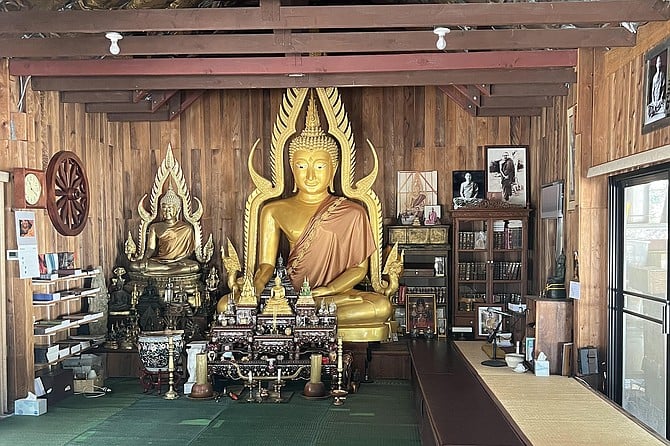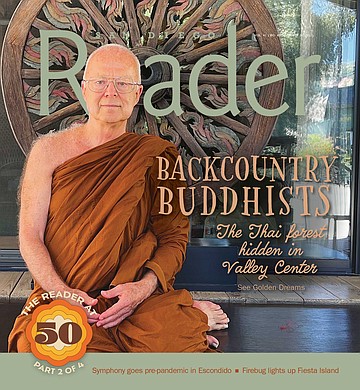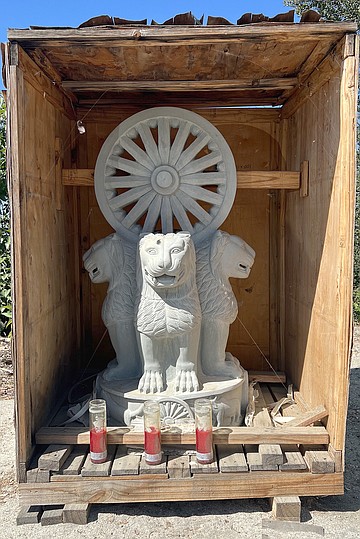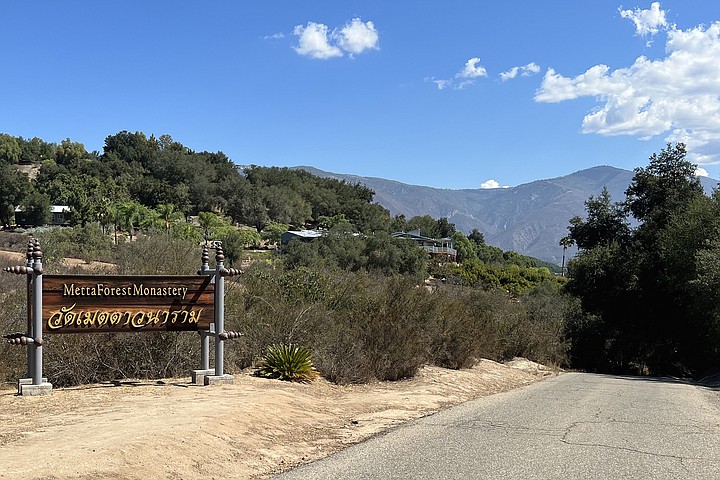 Facebook
Facebook
 X
X
 Instagram
Instagram
 TikTok
TikTok
 Youtube
Youtube

From Oberlin to the Forest
Back in the late 1960s, when Thanissaro Bhikkhu was a college student at Oberlin and was still called Geoffrey DeGraff, he signed up for an inter-term practicum taught by two visiting Buddhist monastics, one Thai and one Japanese. He took a more-than-usual interest in the class: “For me, it just made a lot of sense. I was particularly attracted to the idea of meditation as a skill — there is a skill to being happy. It’s not just a shot in the dark.”

As he would later put it in a set of “Basic Breath Meditation Instructions” that he wrote in 1993: “If you try to base your happiness on things that change — sights, sounds, sensations in general, people and things outside — you’re setting yourself up for disappointment, like building your house on a cliff where there have been repeated landslides in the past. So true happiness has to be sought within. Meditation is thus like a treasure hunt: to find what has solid and unchanging worth in the mind, something that even death cannot touch.”
Unlike many Westerners who are attracted to meditating, he was also attracted to what was behind the practices he was learning: the doctrines of Buddhism, the Dhamma. He had already become intrigued with basic Buddhist concepts like the Four Noble Truths in high school, when he heard about them from two students who had been to Thailand. But the practicum was his first time getting a real taste of Buddhist teachings and practice, and it awoke in him a desire to go deeper. In 1972, after college, he traveled to Chiang Mai to teach English at the university there. In addition to pursuing a job, he was also hoping to pursue a meditation teacher. He found one: Ajahn Fuang, and so found the path that would lead to the rest of his life.

Meeting Fuang after two years in Thailand was what confirmed his commitment to Buddhism: Fuang was “a living example — ‘This is what the training can produce.’” Thanissaro says that when you merely read about an arhat (an enlightened person), “someone without any greed, aversion, or delusion sounds awfully dull, but he was very much alive. He had a really nice, lively sense of humor and he was very, very compassionate.” Thanissaro says, with notable understatement, that he saw that “this training creates good people.”
Fuang was part of the Thai Forest Tradition, little-known at the time in Thailand and all but unknown here. That tradition, Thanissaro explains, represents “an attempt to go back to practicing the way the Buddha taught.” This involved more solitude, more wilderness, and more meditation than other traditions. He says the movement “takes very seriously the possibility of reaching nibbana,” a possibility about which some Buddhists had become pessimistic, believing that the time for such attainment had passed. According to Thanissaro, the Forest Tradition says, “It’s still around, it’s still possible.” Its practitioners adhere “very strongly to the monk’s rules — a large part of the training is following the rules.” These rules pertain to nearly every aspect of life: speech, dress, socializing, eating, not handling money.
“I didn’t jump into this because of the rules, that’s for sure,” Thanissaro tells me. Yet he couldn’t help but see that the commitment and rigor demanded by this way of life seemed to be part of what made both his teacher and the tradition powerful. It all came together as a package.
He was ordained in 1976, and lived in Thailand for 14 years after that. Over the decades, he has become well-known in Buddhist circles for his prolific writing and translations and his talks, which he delivers with sonorous tones and calm eloquence, casually wielding a deep knowledge of Buddhist scripture, the distinctive teachings of the Ajahns in his lineage, and insights from a lifetime of practice. He says: “I’m just trying to represent the Dhamma.”
The Forest in Valley Center
Thanissaro tells me that when he found the want ad for Metta Forest Monastery’s property around 32 years ago, it read: “Own your own mountain.” That mountain was just the spot for the forest monastery that the highly regarded Ajahn Suwat had come to the United States to found, and the land was gifted to Metta by a benefactor. Thanissaro, who would soon become the abbot, was there from the outset. His master, Ajahn Fuang, who had died in Thailand in 1986, “had said that my work was not going to be in Thailand, it was going to be here.” And he was ready to come back.
Buildings were done without permits — “a very Thai way of doing things,” Thanissaro says. Soon he was told: “Now you negotiate with the county.”
At the beginning, there were seven bhikkhus, six of them Thai. Now there are nine bhikkhus, a novice, and two candidates. In a reversal of the monastery’s original make-up, only one bhikkhu is Thai.

The day begins early here, and evinces an elemental simplicity throughout. The bhikkhus rise around four in the morning and meditate until dawn. Then come the morning chores: sweeping around the meditation hall, cleaning the dining hall. At 8:30, they begin the alms round, a reminder that the title each man here uses means “beggar.” In Buddhist countries of Southeast Asia, the alms round could happen in the streets; here, it means a stylized version of the begging that Buddhist renunciants have been practicing for two millennia. Attending laypeople wait in a line and ceremonially fill the bhikkhus’ bowls with rice. The non-rice portion of the meal is prepared in the kitchen, and eaten in the dining hall from the same the begging bowl. This will be the only meal eaten in the day. After the meal, the monks have a relatively free period, during which they can meditate or read. Thanissaro often writes during this time. At five, there is a daily question and answer session with the abbot which is open to the public, followed by a work period, then evening chanting, meditation, and a Dhamma talk.
For the monks, this is home, and the place in which they work to grow continuously as practitioners. But, Thanissaro tells me, “Ajahn Suwat said that the monasteries are not just for the monks. They’re for lay people as well.” The Dhamma, Thanissaro says, “is kind of like a buffet table — you’re welcome to take what you find. The Buddha taught people to be generous. He taught people to be virtuous. He taught people how to have a happy life, how to have a happy family life. He taught everything.”


From Oberlin to the Forest
Back in the late 1960s, when Thanissaro Bhikkhu was a college student at Oberlin and was still called Geoffrey DeGraff, he signed up for an inter-term practicum taught by two visiting Buddhist monastics, one Thai and one Japanese. He took a more-than-usual interest in the class: “For me, it just made a lot of sense. I was particularly attracted to the idea of meditation as a skill — there is a skill to being happy. It’s not just a shot in the dark.”

As he would later put it in a set of “Basic Breath Meditation Instructions” that he wrote in 1993: “If you try to base your happiness on things that change — sights, sounds, sensations in general, people and things outside — you’re setting yourself up for disappointment, like building your house on a cliff where there have been repeated landslides in the past. So true happiness has to be sought within. Meditation is thus like a treasure hunt: to find what has solid and unchanging worth in the mind, something that even death cannot touch.”
Unlike many Westerners who are attracted to meditating, he was also attracted to what was behind the practices he was learning: the doctrines of Buddhism, the Dhamma. He had already become intrigued with basic Buddhist concepts like the Four Noble Truths in high school, when he heard about them from two students who had been to Thailand. But the practicum was his first time getting a real taste of Buddhist teachings and practice, and it awoke in him a desire to go deeper. In 1972, after college, he traveled to Chiang Mai to teach English at the university there. In addition to pursuing a job, he was also hoping to pursue a meditation teacher. He found one: Ajahn Fuang, and so found the path that would lead to the rest of his life.

Meeting Fuang after two years in Thailand was what confirmed his commitment to Buddhism: Fuang was “a living example — ‘This is what the training can produce.’” Thanissaro says that when you merely read about an arhat (an enlightened person), “someone without any greed, aversion, or delusion sounds awfully dull, but he was very much alive. He had a really nice, lively sense of humor and he was very, very compassionate.” Thanissaro says, with notable understatement, that he saw that “this training creates good people.”
Fuang was part of the Thai Forest Tradition, little-known at the time in Thailand and all but unknown here. That tradition, Thanissaro explains, represents “an attempt to go back to practicing the way the Buddha taught.” This involved more solitude, more wilderness, and more meditation than other traditions. He says the movement “takes very seriously the possibility of reaching nibbana,” a possibility about which some Buddhists had become pessimistic, believing that the time for such attainment had passed. According to Thanissaro, the Forest Tradition says, “It’s still around, it’s still possible.” Its practitioners adhere “very strongly to the monk’s rules — a large part of the training is following the rules.” These rules pertain to nearly every aspect of life: speech, dress, socializing, eating, not handling money.
“I didn’t jump into this because of the rules, that’s for sure,” Thanissaro tells me. Yet he couldn’t help but see that the commitment and rigor demanded by this way of life seemed to be part of what made both his teacher and the tradition powerful. It all came together as a package.
He was ordained in 1976, and lived in Thailand for 14 years after that. Over the decades, he has become well-known in Buddhist circles for his prolific writing and translations and his talks, which he delivers with sonorous tones and calm eloquence, casually wielding a deep knowledge of Buddhist scripture, the distinctive teachings of the Ajahns in his lineage, and insights from a lifetime of practice. He says: “I’m just trying to represent the Dhamma.”
The Forest in Valley Center
Thanissaro tells me that when he found the want ad for Metta Forest Monastery’s property around 32 years ago, it read: “Own your own mountain.” That mountain was just the spot for the forest monastery that the highly regarded Ajahn Suwat had come to the United States to found, and the land was gifted to Metta by a benefactor. Thanissaro, who would soon become the abbot, was there from the outset. His master, Ajahn Fuang, who had died in Thailand in 1986, “had said that my work was not going to be in Thailand, it was going to be here.” And he was ready to come back.
Buildings were done without permits — “a very Thai way of doing things,” Thanissaro says. Soon he was told: “Now you negotiate with the county.”
At the beginning, there were seven bhikkhus, six of them Thai. Now there are nine bhikkhus, a novice, and two candidates. In a reversal of the monastery’s original make-up, only one bhikkhu is Thai.

The day begins early here, and evinces an elemental simplicity throughout. The bhikkhus rise around four in the morning and meditate until dawn. Then come the morning chores: sweeping around the meditation hall, cleaning the dining hall. At 8:30, they begin the alms round, a reminder that the title each man here uses means “beggar.” In Buddhist countries of Southeast Asia, the alms round could happen in the streets; here, it means a stylized version of the begging that Buddhist renunciants have been practicing for two millennia. Attending laypeople wait in a line and ceremonially fill the bhikkhus’ bowls with rice. The non-rice portion of the meal is prepared in the kitchen, and eaten in the dining hall from the same the begging bowl. This will be the only meal eaten in the day. After the meal, the monks have a relatively free period, during which they can meditate or read. Thanissaro often writes during this time. At five, there is a daily question and answer session with the abbot which is open to the public, followed by a work period, then evening chanting, meditation, and a Dhamma talk.
For the monks, this is home, and the place in which they work to grow continuously as practitioners. But, Thanissaro tells me, “Ajahn Suwat said that the monasteries are not just for the monks. They’re for lay people as well.” The Dhamma, Thanissaro says, “is kind of like a buffet table — you’re welcome to take what you find. The Buddha taught people to be generous. He taught people to be virtuous. He taught people how to have a happy life, how to have a happy family life. He taught everything.”
Comments